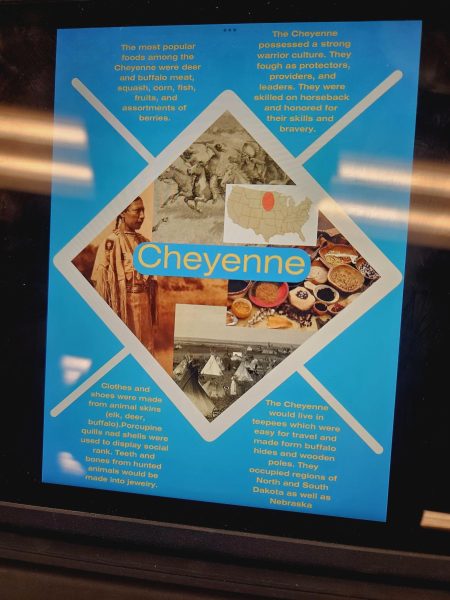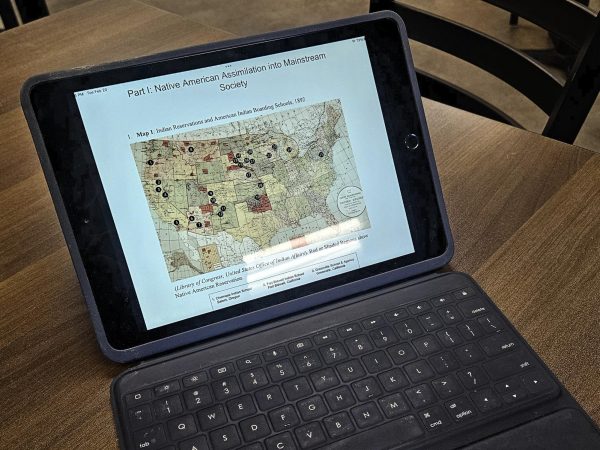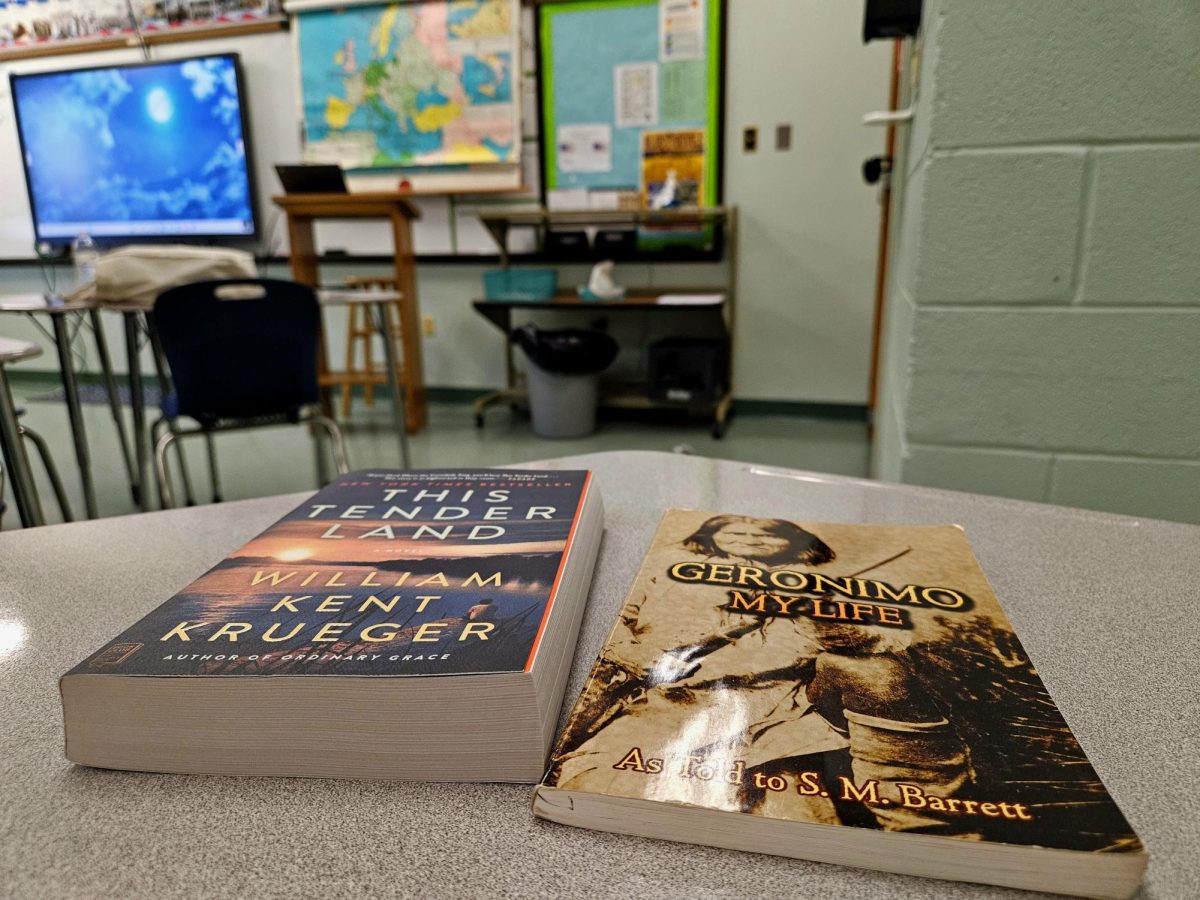Schools across the country are beginning to teach the more distasteful parts of American history.
More and more states are implementing that Native American curriculum be added to their educational programs. This curriculum is set to teach Native American history to students, both the good and the bad parts.
The state of Montana was the first state to require this curriculum in 1999, and the first law about it was put in effect in 2005. This law simply attempted to motivate school districts to teach the material, but many chose to ignore it.

Law makers and educator’s hopes are to implement these lessons in order to remove biases against Native Americans for future generations.
Many Native Americans face extreme poverty rates, with five of the poorest counties in the country include three different tribes: The Lakota, Nakota, and Nakota Sioux.
Native Hope, an organization that helps Native American communities, states that 20% of Native households make less than $5,000 annually.
Due to poverty levels, Native American children have a delayed childhood development. These children have language delays due to an absence of books and behavioral issues due to insufficient order and stimulation.
Native American stereotypes include identifying them as lazy, drug addicts, and more harmful concepts which results in damages to Native children. These children are seen to have insecurities and low opinions of themselves given that these stereotypes accompany them into their classrooms.
Supporters of these lessons in U.S. schools believe that Native American curriculum creates an understanding of Native communities.
Native American curriculum is being discussed in some states
Although progress has been slow, some states are putting new efforts into including this forgotten history.
The education board of Oregon has created lessons on Native American history, which are currently being put into progress, as well as funding tribes to create their own material.
A North Dakota law requires that their schools teach this history, with 10% of their student population being Native. However, no curriculum has been created for schools to teach.
Connecticut also has passed a similar law to North Dakota’s, with their curriculum focusing more on tribes in their state. 11 out of 27 states where numerous tribes live require Native American history to be taught in certain grades.
Unlike the previous states, a similar law to teach this material did not pass in Minnesota.
Just 1% of students in the U.S. are Native American, which is scarcely under half of a million.
In that percentage, 29% to 36% of these students drop out between 7th and 12th grade, found the Bureau of Indian Affairs. This makes Native American children the ethnic group with the highest dropout rate in the U.S.
They also have the lowest graduation rate of all American ethnic groups, with just 75% of Native students graduating. Out of those, only 9.3% of them receive a college degree.
Although there are laws that require it, many schools still have not implemented Native American history into their curriculum. One main reason of opposition is due to CRT (critical race theory).
According to Britannica, CRT is an “intellectual and social movement… based on the premise that race is not a natural, biologically grounded feature of physically distinct subgroups of human beings but a socially constructed (culturally invented) category that is used to oppress and exploit people of color.”
Believers of CRT believe that issues regarding Native American curriculum and education are embedded in a history of turbulence, such as the government sending Indigenous children to boarding schools.

The boarding schools served the purpose to remove Native children’s culture from them and adapt them to a traditional, American culture.
These boarding schools resulted in students with mental health issues and sometimes even led to death. Physical punishments were common practices at some schools for rule breakers, such as students who spoke in their Native languages or practiced Native beliefs.
States across the country are currently debating over whether CRT should be implemented in their schools. Those against CRT advise parents of students to pay attention to their school district’s curriculum and speak up.
A research study done at the Manhattan Institute found that out of 1,500 graduated students in America between the ages of 18 to 20, 90% said that they have been taught at least one CRT topic at their former school.
67% of those surveyed claimed that they had heard from an adult that “America is built on stolen land.”
The students surveyed all attended different varieties of schools such as religious schools, non-religious private schools, and home schools.
Those opposing CRT believe that it does more harm than good and is inherently racist, driving different races of students further apart.
Opposers believe that students exposed to these subjects and ideas in school feel anxiety over holding controversial opinions, and even go to say that white students are less eager to speak out against students of color out of fear they will be deemed prejudiced. Opposers also state that CRT will also impact how students of color view their white peers.
Native American curriculum fosters an understanding of Native people and communities
The majority of Native American curriculum (87%) only teaches topics taken place before 1900s, found researchers at Pennsylvania State University in 2015. They also found that 27 states failed to name any single Native American in their lessons.
Certain material that is taught in Native American curriculum includes:
- Indigenous languages
- Traditional medicine used by tribes
- Impacts of colonization
- Traditional foods and medicines
- Treaties between our government and the Native Americans
- Tribal histories
NK360° (Native Knowledge 360 Degrees) was created by the Smithsonian’s National Museum of the American Indian to provide material that explores Native American history more in-depth.
Primarily, the lessons taught in this initiative expand on topics already in schools, such as Thanksgiving and the Trail of Tears, through interactive methods. Its lessons work to further critical thinking skills for students.
The initiative strives to provide Native American voices and viewpoints for its lessons, such as including interviews with Native children and adolescents.
“Essential Understandings” is a central part of NK360° that consists of parts to help teachers reflect on how they educate students on Native American history. This section is available free online for educators.
Those behind NK360° eventually hope to include other topics regarding Native Americans.
Many teachers hold concerns over the law’s states put in place to teach Native American history. Many of these laws come with a lack of funding, and can place more pressure on schools in the process of adding new required curriculum already.
Some teachers also hold beliefs in the dangers of CRT and believe implementing this curriculum into their classrooms will teach students that racism is imbedded in their country’s laws and way of life.
Other teachers believe that this new curriculum will allow for more genuine lessons and provide better instruction for educators.
One former student in an Oregon school district was kicked out of her class for asking questions about missing Native American history in her civics class. This student was Jaylyn Suppah, a member of the Confederated Tribe of Warm Springs (CTWS) and current educator, who now advocates for social justice through decolonizing education.
Some teachers are excited about this new curriculum and believe it fits into their previous lesson plans in coherent ways. Bellwood-Antis’ Amber Auberzinski, the high school American history teacher, is passionate about Native American history being included in her school’s curriculum.
“In college my thesis was on Geronimo and the Apache Resistance. This is where I learned a lot about the US government and Native American conflict during this time. I always tell my students ‘This is not an easy chapter – there is no sugar coating this one’,” stated Auberzinski.
She stated that she was never taught about Native Americans in high school and her American history class started with The Gilded Age, “[The lesson] focused more on the industrialization of American during this same time period.”
In her class, Auberzinski is required by the state of Pennsylvania to teach 1890 to present day American history. The Department of Education provides “Westward Migration” and “Land tensions with Native Americans”. Auberzinski creates the materials to go with those lessons on her own.
With her American History students, the first unit regarding Native American history is The West. “We cover land conflicts after the 49ers Gold rush between Natives and the families migrating out West, several different treaties that were broken on both sides, well known Native military leaders such as Crazy Horse, Red Cloud, and Sitting Bull. We also cover Custer’s Last Stand, The Long Walk, Geronimo’s resistance, the Industrial Schools from the Dawes Act, Buffalo extinction, the Wounded Knee Massacre and more.”
Auberzinski commented that, “Teaching about Native Americans helps us understand history better, respect different cultures, heal old wounds, care for nature, and make the world more fair. Learning about them is a step towards making things right and moving forward.”








